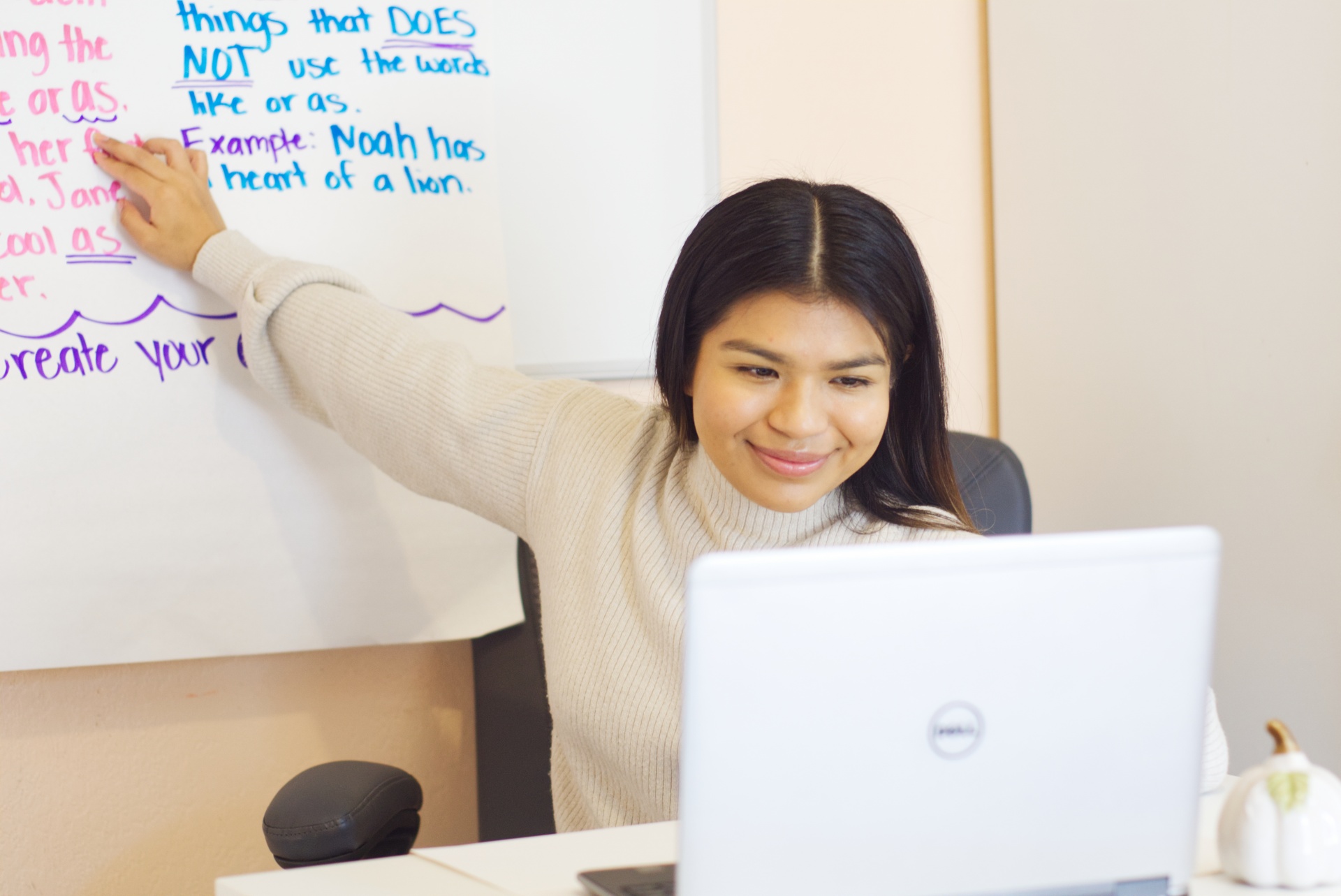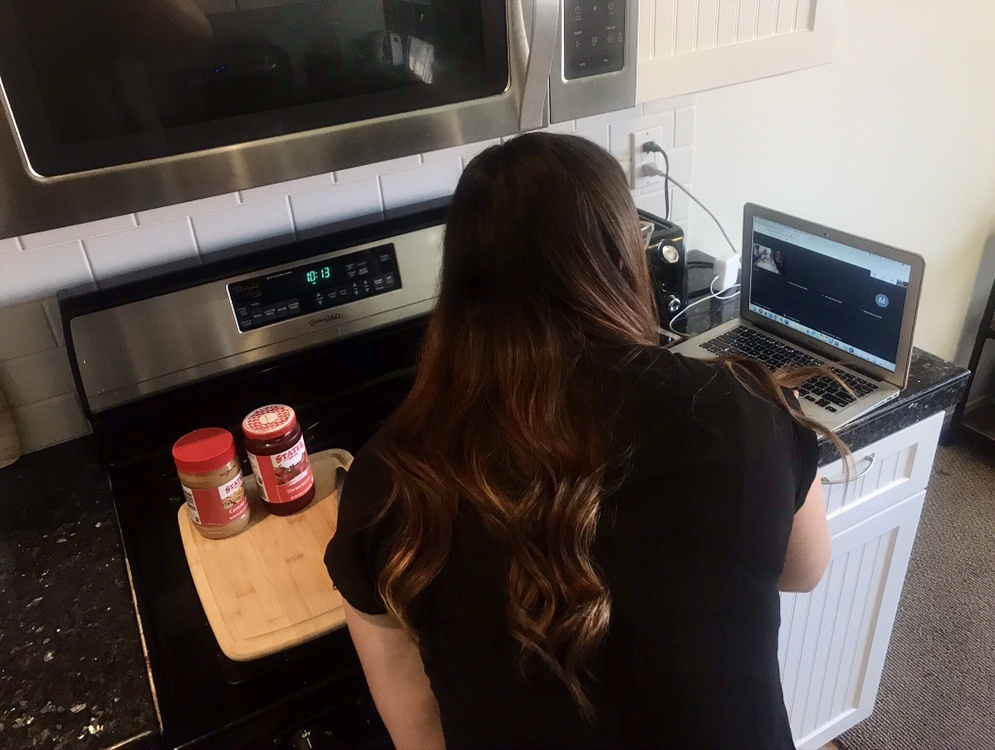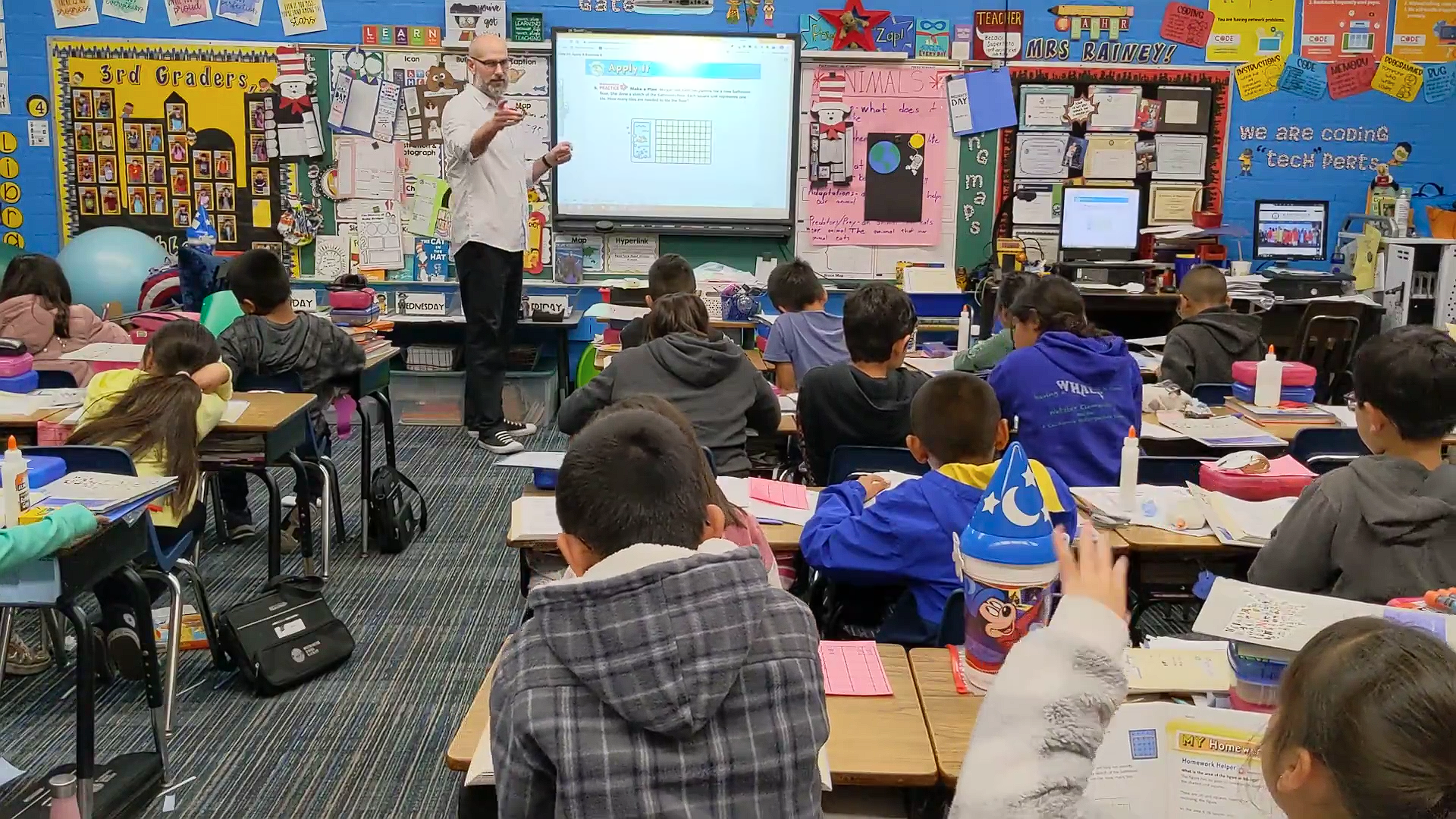Tech-savvy student teachers give mentors lessons in online instruction
The learning curve was a steep climb for fifth-grade teacher Elsa Ortega when schools closed their doors in March because of COVID-19. How was this veteran teacher supposed to keep her students interested in math, science and reading from a distance?
Ortega was like many K-12 teachers who suddenly pored over tutorials last semester to learn how to navigate Zoom, Google Classroom and YouTube videos. And for many, the technology still didn’t make sense until their student teachers spoke up.
Cal State Long Beach student teacher Vanessa Ramirez was Ortega’s lifesaver last spring as they problem-solved how to teach a classroom of 10-year-olds. Because of their youth and comfort with ever-changing technology, several student teachers pursuing their teaching credential from the College of Education said they were able to aid and encourage their veteran teachers last semester.

“I am a veteran teacher and therefore, I’m not too tech savvy,” Ortega said. “Vanessa was able to give me a quick tutorial or point me to YouTube links that would help with implementing my lessons.
“For example, our platform was Google Classroom, but she would embed Nearpod (interactive online instruction,) Quizziz (teacher-created quizzes) and recorded YouTube links that allowed the students to do follow-up lessons and we would get feedback.”
Ramirez, who earned her multiple-subject teaching credential in May from the College of Education, said she quickly identified programs and strategies that could support student learning, such as Google Slides and Breakrooms. “I believe my knowledge of technology allowed me to implement different programs that allowed the students to succeed academically,” Ramirez said.
The student becomes the teacher
Amber King’s mentor teacher gave her the tools to work in a special education classroom, passing on her knowledge of Chromebooks, projectors and subject-specific websites. But when COVID-19 forced schools to transition to online learning, the student became the mentor.
“I spent many hours watching how-to videos on YouTube, then collaborated with other student teachers to see if they found better ways to do things,” King said.

“Then I created my own how-to videos that were specific to what we were using. Once I was able to figure everything out, I spent many hours with my mentor teacher to teach her everything I knew."
Even with all the technology, teaching students with disabilities from her living room presented obstacles. She said the teachers met daily to discuss ideas and adapt or modify the curriculum, from functional life skills to simple cooking lessons, such as making a peanut butter-and-jelly sandwich.
“I created short video clips demonstrating various tasks the students could do around the house as well as some how-to videos for the parents,” she said.
King said she spent long hours with her mentor teacher, who let her pretty much take over the teaching for the duration of the semester.
“I know she was very grateful that I was so tech savvy and able to teach her at a pace that was easier for her,” King said.
'Tech geek' helps teacher mentor
Student teacher Jeff Anderson is a self-described “tech geek,” which served him well when learning went virtual. His knowledge enabled him to quickly learn various teaching platforms that gave his teacher mentor the tools to teach online.
“This allowed me to teach my mentor a lot, which was great because she taught me so much more,” he said. “We were able to adapt assignments that would be handed out as worksheets into digital assignments using different apps in G Suite for Education.

“Our Google Classroom came alive with conversations and fun lessons, interesting videos and fun activities.”
Not even the tech-savvy Anderson could provide all students with fun lessons because he said that not all students possessed the technology to succeed.
“I had two students who simply were unable to get internet access,” he said. “Two out of 28 isn’t a terrible statistic in many regards, but in this case, it means two students don’t get instruction. They’re on their own – to read the textbook and try to learn how to calculate area and perimeter.”
Technology made learning ‘less difficult’
Yasmine Monterrosa found distance teaching easy once she did her homework. She studied Google Forms and Screen Share. She learned the intricacies of Seesaw, Google Classroom and how Zoom allowed her to share screens and display worksheets.
And once she grasped the distance learning, she helped her mentor teacher navigate the online programs that were needed to set up student accounts. Monterrosa said that once they became comfortable with the technologies, teaching became less difficult.
“Every staff member at Parkview Elementary and student teachers in my UDCP cohort were going through the same situation, so it was amazing to see and be a part of the collaboration process,” she said.
Monterrosa will be a first-year education specialist for students in transition-kindergarten through third grade. Not only will she be teaching music and grammar online, but establishing relationships with them, one Zoom meeting at a time.
“This year will come with many challenges, but I am ready to adapt, learn and be positive for my students,” Monterrosa said.
Consistent routines were important
The sudden switch last spring was, at times, challenging for both graduate student Alique Cherchian and her mentor teacher. Both, it turned out, had to learn and teach in different modalities without “reinventing the wheel,” she said.
“We kept a consistent routine and had consistent procedures,” Cherchian said.
Cherchian said her mentor teacher taught her a few online strategies and vice versa, as they brainstormed over lessons and available resources. She said that learning Google Technology in her Single Subject Credential Program gave her the confidence to suggest different approaches and creative assessments.
“I believe that approach made us strong,” she said. “We listened to each other and trusted one another.”
Distance learning forced everyone, regardless of how many years of experience, to re-think how to teach, Cherchian said. It sent everyone back to “square one.” What didn’t change was the dedication of student teachers and mentor teachers to their TK-12 students.
“It definitely felt as though everyone mobilized, as if it was ‘total war’ for education, for our students not to be left behind,” Cherchian said. “As difficult as this was, the flame of what makes teachers who they are never went out.”





